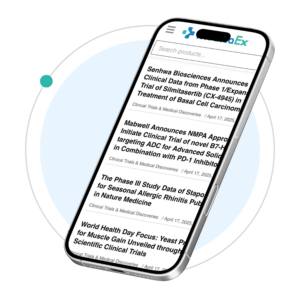“ViVE is the seminar that promotes one-of-a-kind discussions because there are various people from the digital healthcare industry under one roof. The profound conversations about utilizing technological advances to improve the healthcare experience for patients wherever they may be are what I particularly look ahead.
Due to cutting-edge technologies that bridge the gap between logistics as well as medicine, we have a fantastic opportunity to change the way that care is delivered through online healthcare and at-home testing. By enabling patients to observe their own vital signs using direct-to-consumer medical tests or patient monitoring gadgets, this not only encourages home care and improves access in rural areas but also encourages patients to comprehend their wellness on their own terms.
Healthcare systems and provider groups are making adjustments to the new financial conditions, and better performance will depend more and more on transforming into more productive and effective through automation and simplified data-driven analysis. Health systems must maximize both their human capital and their data resources if they want to optimize performance.”
DIGITAL TRANSFORMATION IN HEALTHCARE
Based on who you ask, digital transformation can mean different things. However, ViVE 2023’s health IT leaders concur that the time for technological advancement in the medical sector is now. Practitioner burnout, a lack of employees, rising cyber threats, shifting patient demands, and an expanding body of data using which insights can be obtained are challenges the industry faces. Healthcare delivery is still being impacted by digital health companies.
Moving Digital Transformation Forward in Healthcare
The likelihood that healthcare institutions will undergo digital transformation increases with increased collaboration. The relationship she has with the chief marketing officer and the marketing group at LifeBridge Health, where Tressa Springmann serves as senior vice president and chief data and digital officer, is what makes her most proud. Through this connection, she and her team have been able to better understand the neighborhood and how to use digital-first initiatives to connect with potential patients.
Carmody stated that in order to define the direction and vision for UPMC’s data analytics program, he is concentrating on developing and establishing relationships with people that did not exist in the past, like the chief analytics officer and data scientists. UPMC is currently acting proactively rather than reactively, as the organization frequently had to do during the pandemic’s peak.
We are making our healthcare services available to the groups we serve, he said, rather than developing technology for use only inside the walls of hospitals. “I have optimism. In the upcoming years, we will have a fantastic opportunity to transform healthcare.
How to Design Digital Solutions for Clinicians
According to Chan, numerous healthcare professionals are quietly quitting, which means they work fewer hours, as a result of rising burnout.
The question of whether an innovation might improve the workflow for clinicians must be asked when considering workflows, he added. “When deploying solutions, consider their effect on the patient experience, operations, and the economy at 1 month, 2 months, 3 months, and 4 months.”
Involving clinicians from the beginning of the process and being clear about the issues the organization is attempting to address, according to Barad, are important.
“Frequently, a solution is found and then presented to the provider. We have to do the opposite and work on listening with empathy,” he said. What issue are we actually attempting to resolve? then work closely with clinicians from the start of the design process.
Asserting the same point, Vaezy stated, “For us, I’m not sure what the value will be in developing or employing digitization from within if we fail to take benefit of the connection with our healthcare operation partners. The whole value is that.”
Future expectations
Care team change will likely be an important subject at ViVE, in my opinion. The primary motivators are a shortage of nurses and financial constraints. Around 52% of nurses are thinking about leaving the bedside at a moment when there are 1.1 million or more open positions. Hospital management is aware that they need to make an improvement, and 83% are looking into virtual nursing as a potential remedy. Because of virtual monitoring technology, which enables nurses to spend more time with patients, they are able to practice at the most advanced levels of their licenses and enjoy the most satisfying aspect of their work.
This year, there is undoubtedly a more intense industry-wide emphasis on health equity that permeates both clinical approach and care delivery from the outset. I’m excited to learn how some of the best in the industry are advancing equity in both in-person and online contexts, and to explore new ways we could all work together in achieving this significant shared goal. Virtual care has played as well as will continue to play a crucial role in dealing with health equity in the health system.







